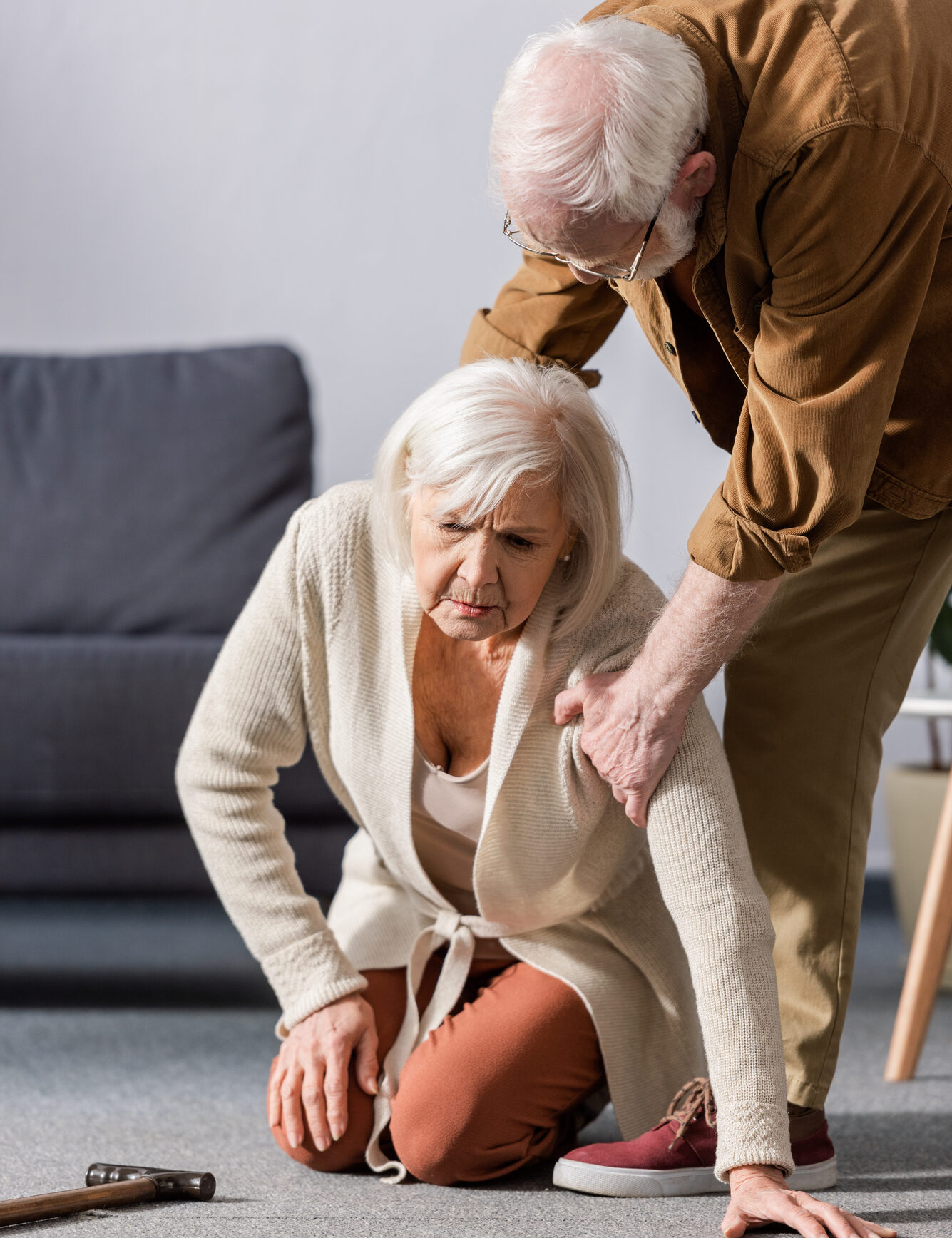As people age, elderly fall prevention becomes an increasingly important priority, whether individuals live independently or have support in a continuing care retirement community, like Arbors of Hop Brook. Beyond existing stair railings or a cautious approach to snow and ice, greater awareness about and attention to maintaining mobility and stability are essential. The following highlights why preventing falls in older people is so critical and some strategies to help reduce the potential for this unfortunate occurrence.
Why is Fall Prevention in Older Adults So Important?
While falling happens as babies learn how to walk and people from teens to adults sometimes trip and tumble, these falls are typically met with more resilience than older adults often have. Consequently, elderly fall prevention is an important part of caring for people’s overall wellness as they age. In addition to their enjoyment of a variety of senior living activities, here are several reasons why preventing falls in older people is so important:
- Bones become increasingly fragile with age, so fractures and other injuries are more likely to occur in older adults.
- Elderly people often have a slower healing timeline than younger individuals, and medical conditions like heart disease may further impact the process. Consequently, broken bones may take longer to heal or be accompanied by other complications.
- Reduced muscle strength and changes to one’s balance also happen during the more senior years. As such, falling is more likely, so greater care needs to be taken to avoid it, such as using a support structure during movement or removing tripping hazards.
- The emotional and psychological impacts of falling or simply the fear of falling can also compromise the health and well-being of the elderly. After a painful falling experience, some individuals may reduce their daily movement – a change that further decreases their strength and mobility and thereby increases their risk of falling. Others may feel more anxious or reduce their social engagements which can lead to sadness and feelings of isolation.
- Fall prevention measures for older adults can also help reduce unexpected healthcare costs or be the difference between a move to assisted living or a nursing home. Instead of slipping and falling on that kitchen rug that they’ve warned themselves about time and again, they can avoid expensive hospital care and physical therapy and continue with the most appropriate level of independence by addressing potential fall hazards in advance.
When falls start occurring with increasing frequency, this sign of aging may indicate the need to begin conversations about assisted living options. If you are already evaluating assisted living communities for yourself or a loved one, make sure to investigate how the facility and staff address elderly fall prevention and what additional amenities are available for preventing falls in older people as the years pass.
5 Tips for Preventing Falls in Older People
Protect yourself or your loved one from life-altering injuries by learning how to help prevent falls in older people. A few elderly fall prevention tips should help, but as always, consulting with healthcare providers and other caregivers for older adults enables greater personalization of fall prevention strategies for each individual’s unique needs and circumstances.
- Engage in exercise! Check out the community calendar of your senior living residence for opportunities like yoga or core strengthening programs to support continued muscle strength and balance.
- Revitalize your decor! Update lighting for clear visibility. Exchange old runners that people of all ages trip over during every holiday event for non-slip mats. Support safety for all with additional handrails for the stairs and bathing areas.
- Declutter and stay alert! In addition to any tricky rugs, remove or relocate ornamental or functional floor items out of potential walking spaces, if possible. If they can’t be moved, try to draw specific attention to those structures so as to avoid them. Also be thoughtful during play time with pets and around them. Both pet toys and pets themselves, especially if they are hidden by other clutter, may become fall hazards.
- Accessorize yourself and your home! Skip the slippers and opt for sturdy footwear with non-slip soles. Add a cane or walker within easy reach or place these supports in multiple rooms. Keep your eyeglass prescription current and attend routine check-ups, so that vision issues don’t cause a fall! Finally, consider adding an alert bracelet or necklace for quick access to emergency care in the event that a fall does happen.
- Manage your intake! Whether independently or with the support of the medication providers in your assisted living facility, be aware of any medications that may lead to balance or coordination issues. Also, aim for consistent hydration and making nutritional choices that support bone strength and overall health.
At Arbors of Hop Brook, we offer many services and amenities to our residents to support their evolving needs and overall wellness. From one of our fitness classes to walking on our well-maintained paths and personalized care including therapy and other medical support, our team is here to help you or a beloved older adult with all of their healthcare needs, including fall prevention. Learn more about Arbors of Hop Brook, take a virtual tour or contact us today to find out more about our assisted living community!


